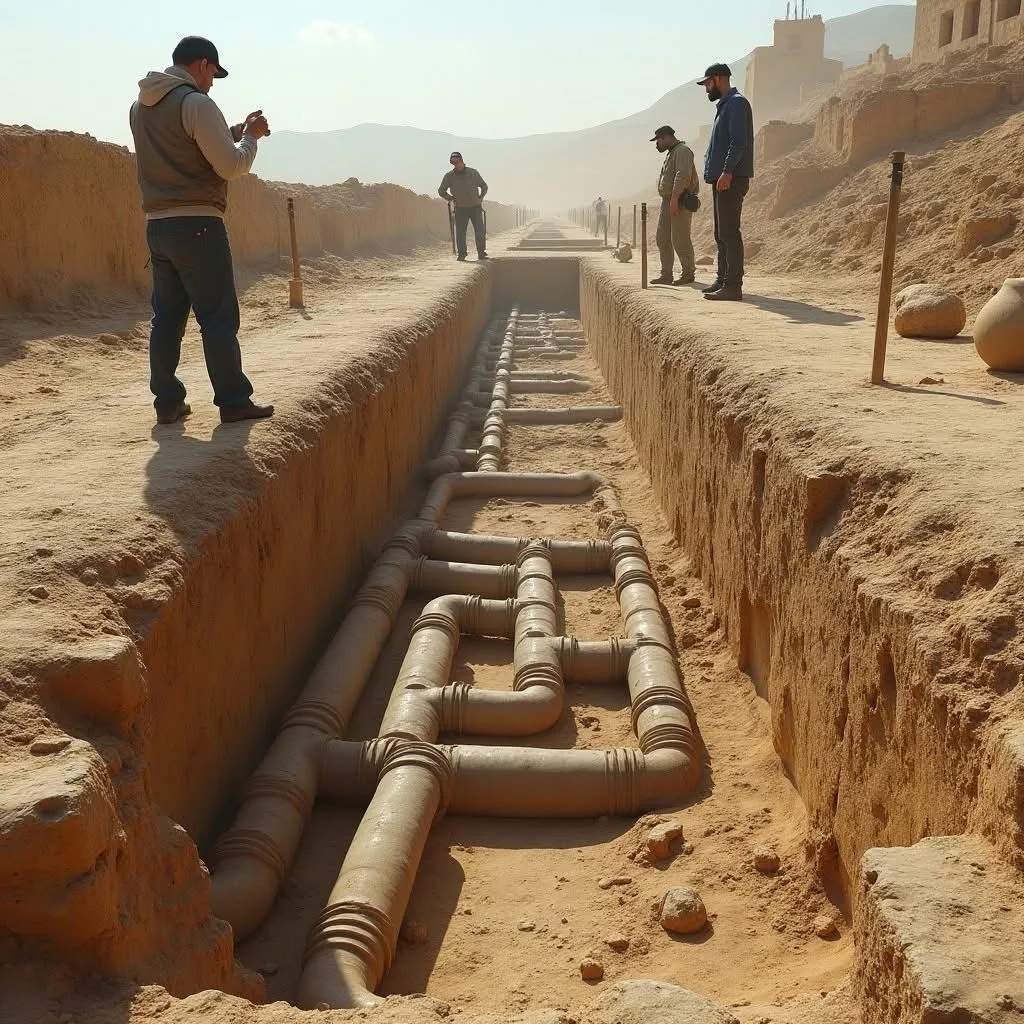Culture et histoire
Un système d’évacuation d’eau très moderne découvert en Iran datant de 1500 ans
Le post
Voir sur
*"A 1,500-year-old water filtration system discovered under an Iranian castle! 🏰✨ The ancient Sassanids engineered clay pipes & ceramic vessels so advanced, they rival modern tech. Who says the past was primitive? #AncientEngineering #LostTechnology"*
In 2015, construction workers in **Borujerd, Iran**, stumbled upon an archaeological marvel—an intricate **Sassanid-era aqueduct system** hidden beneath a crumbling castle. This labyrinth of **clay pipes and ceramic filtration vessels** revealed a water network so sophisticated, it included **sedimentation tanks, flow regulators, and even purifiers**—proving the Sassanids mastered hydraulics centuries before modern plumbing.
Some experts argue the system could be even older, hinting at **Parthian or Achaemenid origins**. Either way, its precision humbles modern engineers: these ancient scientists moved water **without pumps or electricity**, using gravity and geometry alone. Was this the blueprint for Persia’s legendary *qanat* systems? One thing’s clear—our ancestors were far from "primitive."
#SassanidTech #AncientAqueducts #WaterEngineering #PersianHistory #BorujerdDiscovery #LostKnowledge #MedievalIran #ArchaeologyFinds

Le débunk
❌ Fake — clearly an AI-generated image.
Beyond the laughable structure and connections as well as the overly modern look of the pipes, the real discovery is well-documented and looks nothing like the image in the post!
Here’s what the actual ancient Iranian water filtration system called Tanpusheh (in Farsi), discovered in 2015 in Borujerd, looks like:
https://ifpnews.com/excavations-unravel-mystery-of-ancient-aqueduct-system-in-borujerd/
Quite a difference, isn’t it?
Furthermore, no credible sources, history websites, or even Iranian news outlets have shared this photo — it only circulates on social media:
https://www.facebook.com/groups/120010951980813/posts/1730590884256137/
In fact, ancient hydraulic structures designed to tap into underground water sources are called qanats.
They are essentially gently sloping underground channels developed by the ancient Persians in the early 1st millennium BC.
EN https://en.wikipedia.org/wiki/Qanat
FR https://fr.wikipedia.org/wiki/Qanat
Some of these structures are even listed as UNESCO World Heritage Sites and are indeed masterpieces of engineering:
EN https://whc.unesco.org/en/list/1506/
FR https://whc.unesco.org/fr/list/1506/
En français :
❌ Fake, image manifestement générée par une IA.
Au-delà de la structure absurde des connections et de l’aspect beaucoup trop moderne des tuyaux, la véritable découverte est bien documentée et ne ressemble en rien à ce qui est montré dans l’image du post !
Voici à quoi ressemble vraiment l’ancien aqueduc iranien appelé Tanpusheh en farsi, découvert en 2015 à Borujerd :
https://ifpnews.com/excavations-unravel-mystery-of-ancient-aqueduct-system-in-borujerd/
C’est quand même assez différent…
De plus, aucune source fiable, aucun site d’histoire, ni même les médias iraniens ne relayent cette photo ; elle ne circule que sur les réseaux sociaux :
https://www.facebook.com/groups/120010951980813/posts/1730590884256137/
En réalité, un ouvrage hydraulique ancien destiné à capter une nappe d’eau souterraine s’appelle un qanat.
Il s’agit souvent d’un canal souterrain à pente douce, développé par les anciens Perses au début du 1er millénaire avant J.-C.
EN https://en.wikipedia.org/wiki/Qanat
FR https://fr.wikipedia.org/wiki/Qanat
D’ailleurs, certains de ces ouvrages sont même classés au patrimoine mondial de l’UNESCO et sont en effet des trésors d’ingénierie:
EN https://whc.unesco.org/en/list/1506/
FR https://whc.unesco.org/fr/list/1506/
Vous avez une question, une remarque ou une suggestion ? Contactez-nous en en indiquant le titre du débunk. Nous vous répondrons au plus vite !
Contactez-nous
